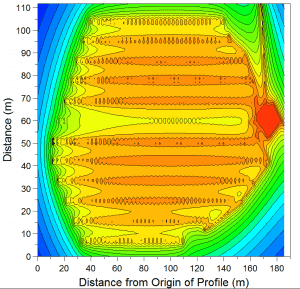In this case study. We highlight Earthing System Design avoiding stray current corrosion and saving the client money in the process.
Engaged to perform earthing design for a utility-scale PV Solar Farm in the south-west of England. As well as achieving compliance with BS EN 50522. Also, it was necessary to comply with the requirements of G59 and the DNO. But, what makes this case study a worthy of note. How the PV system build, itself, utilised as a part of the final Earthing Design Solution. Also, not only saving on installation costs but also avoided anti-corrosion measures including Cathodic Protection.
Owing to the recent tightening in subsidies for utility-scale PV (photo-voltaic) in the UK. There is even more pressure to control costs on the larger scale PV projects. But, it is vital to ensure that the focus on safety remains. At this site, GreyMatters produced a competitive cost design using our significant experience to balance the cost. Also, against the risk to human safety.

Dealing with the Stray Current
High-end industry-standard Finite Element Analysis packages used to develop an earthing network that integrated the sites extensive foundation system. Thus, reducing the number of Earth Electrode rods required. Therefore, the routing of the conductors was optimised, reducing installation costs as well as material costs. And finally, verifying the installed system against the original proposed Electrical Earthing Design model. Thus, ensuring that the safety case remained valid.
Possible Stray Current Corrosion
The process began with GreyMatters attending the site to collect soil resistivity data. Owing to the site location, the soil resistivity was very low. So, using a high signal-level resistivity tester is critical to obtaining accurate data. Also, determining the soil structure is likely to cause galvanic and stray current corrosion between the support system for the panels and the earthing system. As a result, GreyMatters recommended the use of galvanised steel earthing instead. Galvanised Steel is reasonably popular in Europe, as it offers similar performance to copper while reducing costs. Additionally, it is much less attractive to thieves. So, reducing the maintenance cost due to theft.
Once the soil resistivity testing performed using the Wenner method. And processed using CDEGS RESAP. A ‘virtual’ model representing the entire site above and below ground created in CDEGS HIFREQ. Eg. the panel support structures (tables). Also, inverter substation, fence and HV connection and tower, modelling, as well as the substation plinth and reinforcement.
Economic Perspective
From an economic perspective (value engineering). As a direct result of the CDEGS modelling, a significant saving was achieved, given a minimal amount of purpose-built earthing required. The table supports driven over 1m into the ground. So, able to take the role of most of the rods (vertical electrodes) in the earthing system. Also, numerous earth rod electrodes will be installed around the substation plinth to assist with surface voltage control. And, the interconnections between the tables, installed in the same cable trenches, as the cables back to the substation. So, needing no additional trenching. As a result, this saving cut down further on the installation costs. And also, accelerated the construction completion. This allows the client to start protecting against stray current corrosion and generate revenue without delay.
Post-Construction
Less than three months later, GreyMatters back on-site, performing post-construction verification by Fall-of-Potential testing. Thus, not only to establish, the network grid connection works. But, the testing showing some minor quality issues with the installation. However, these were promptly rectified by the installation contractor within a week. Moreover, GreyMatters returned to the site to verify the satisfactory installation.
There was good agreement between the modelled resistance to the earth and the measured resistance to the earth. Also, continuity tests confirmed system integrity. Moreover, without this level of information, the circle of the design process can’t be closed out. Also, we need to confirm that our models are accurate and calibrated. And the safety calculations were confirmed as valid.
Protecting Against Stray Current Corrosion Copper vs Galvanised Steel
Galvanised steel is suitable for a wide range of earthing applications compared to copper. GreyMatters designed a technically compliant system using only 250m of 105 mm2 steel conductor and rod electrodes, thus significantly reducing the developer’s cost impact without compromising safety.
Often, thinking outside the box and considering the use of less apparent materials can future-proof the installations, protecting against stray current corrosion and enhanced corrosion due to the inadvertent creation of galvanic cells.
If you believe your current Electrical Earthing System Design needs a rethink from some new GreyMatter. Then get in touch, and we can discuss how to future-proof your project.
Engage with us…
- Earthing Design Services & Lightning Protection Design – If high voltage power systems and lightning are causing you concern why not see how we can help with a quick ‘live chat’ below as a start.
- XGSLab – A complete software tool for the simulation of Power, Earthing, Grounding and Lightning Systems, get in touch to request a free demo.
- Get Certified – Start your journey to become certified in Power Systems Earthing & Design.
